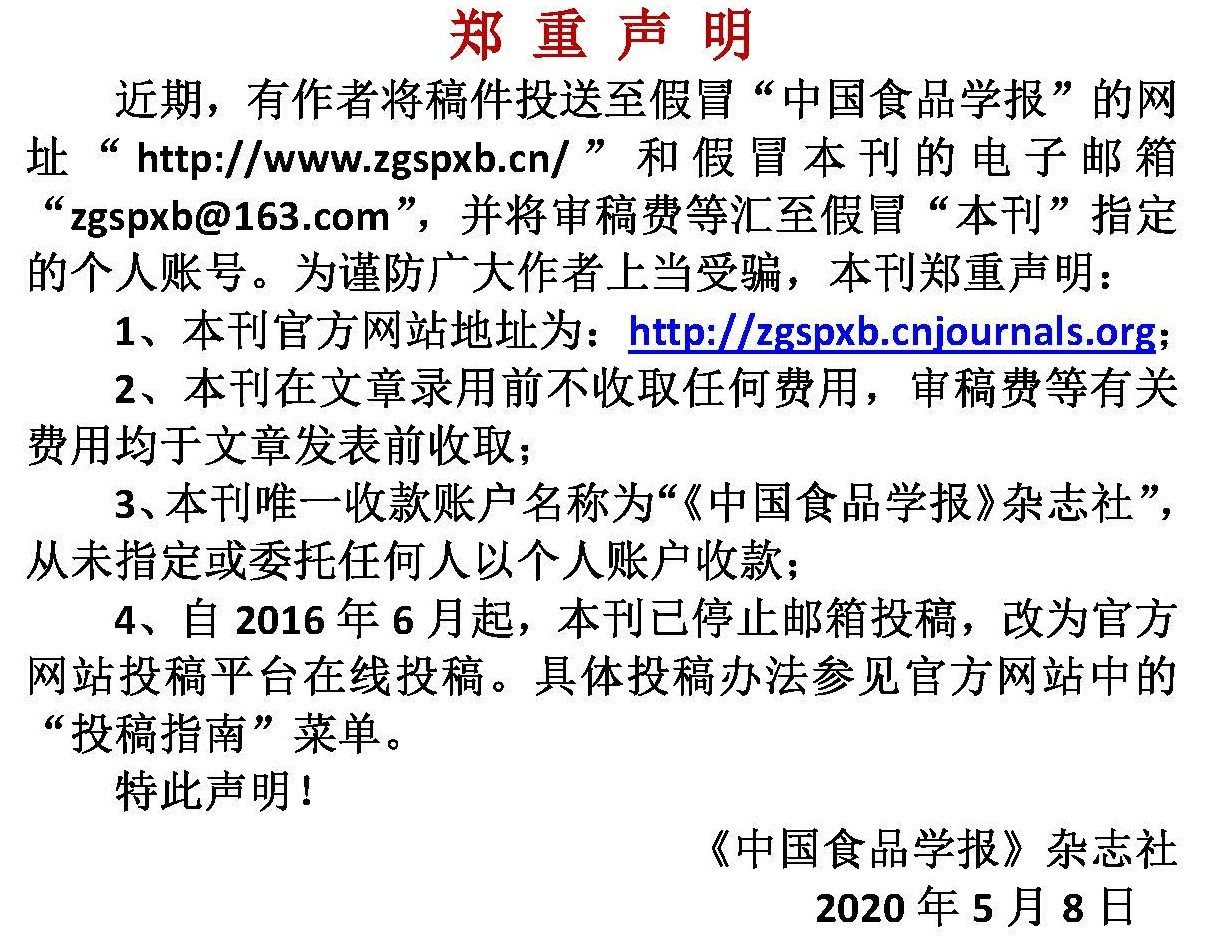基于生物脱腥的扇贝挥发性风味成分解析
作者:
作者单位:
(1.福建省农业科学院农业工程技术研究所 福州 350003;2.福建省农产品(食品)加工重点实验室 福州 350003;3.福建省农业科学院农业质量标准与检测技术研究所 福州 350003)
作者简介:
林晓姿(1975—),女,本科,研究员
通讯作者:
中图分类号:
基金项目:
福建省省属公益类科研院所基本科研专项(2020R1032009)
Analysis of Volatile Flavor Components in Scallop Based on Biological Deodorization
Author:
Affiliation:
(1.Institute of Agricultural Engineering Technology, Fujian Academy of Agricultural Sciences, Fuzhou 350003;2.Fujian Key Laboratory of Agricultural Products (Food) Processing, Fuzhou 350003;3.Institute of Agricultural Quality Standards and Testing Technology Research,Fujian Academy of Agricultural Sciences, Fuzhou 350003)
Fund Project:
引用本文
林晓姿,梁璋成,韦航,何志刚,林晓婕,苏昊.基于生物脱腥的扇贝挥发性风味成分解析[J].中国食品学报,2022,22(8):261-275
复制分享
文章指标
- 点击次数:
- 下载次数:
- HTML阅读次数:
历史
- 收稿日期:2021-08-02
- 最后修改日期:
- 录用日期:
- 在线发布日期: 2022-09-08
- 出版日期:
文章二维码

版权所有 :《中国食品学报》杂志社 京ICP备09084417号-4
地址 :北京市海淀区阜成路北三街8号9层 邮政编码 :100048
电话 :010-65223596 65265375 电子邮箱 :chinaspxb@vip.163.com
技术支持:北京勤云科技发展有限公司
地址 :北京市海淀区阜成路北三街8号9层 邮政编码 :100048
电话 :010-65223596 65265375 电子邮箱 :chinaspxb@vip.163.com
技术支持:北京勤云科技发展有限公司
